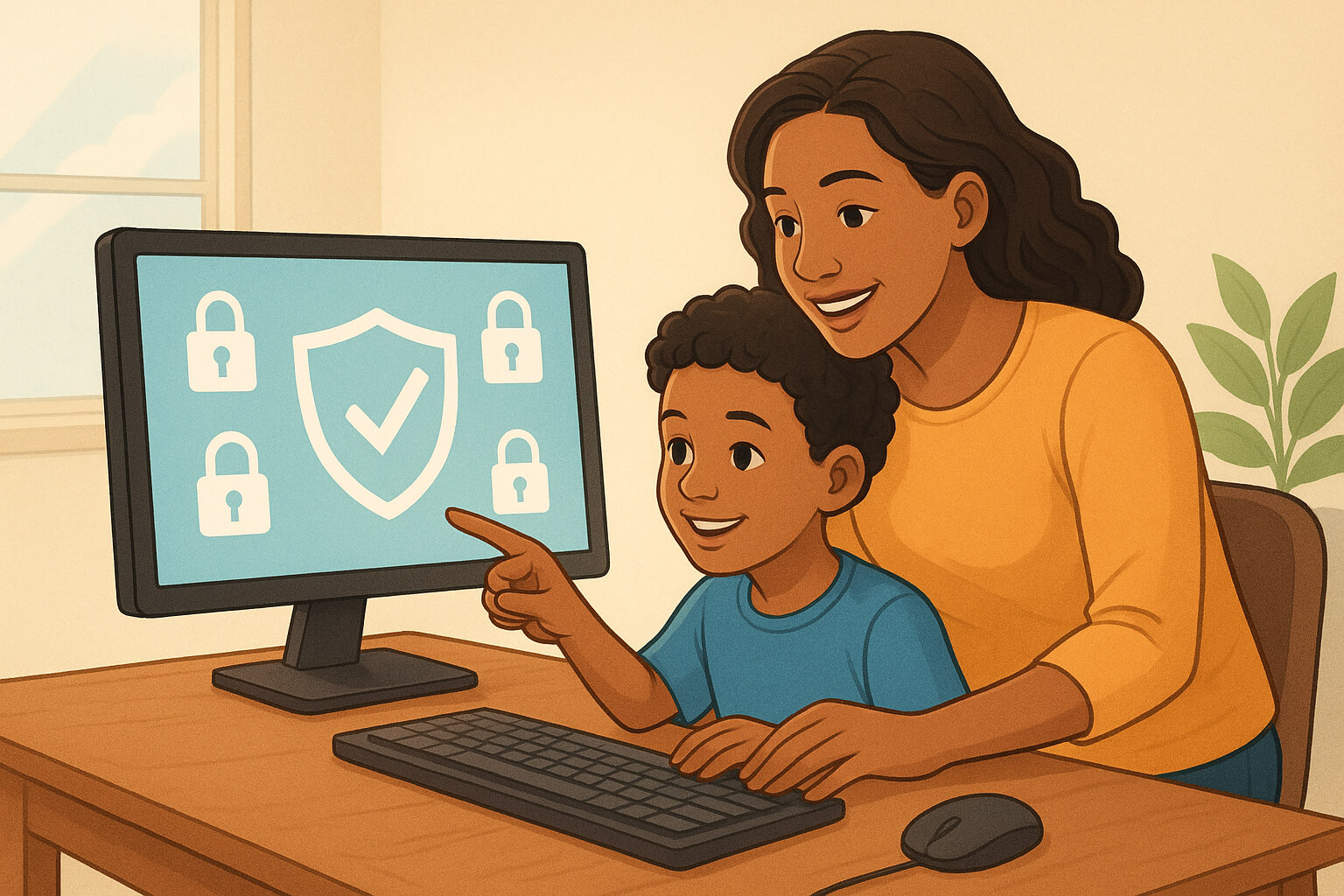Cybersecurity for Kids: Staying Safe Online

In today’s digital era, children are growing up surrounded by technology. From online learning platforms to social media, gaming, and video streaming, kids are more connected than ever before. While the internet offers incredible opportunities for learning, creativity, and social connection, it also exposes children to risks like cyberbullying, privacy breaches, and harmful content. That’s why teaching children about cybersecurity and safe online practices is essential for their well-being.
Cybersecurity education equips children not only with technical skills but also with the awareness to navigate the online world responsibly. It fosters resilience, critical thinking, and digital citizenship—skills that are increasingly vital in modern life.
Why Cybersecurity for Kids Matters
- Children are naturally curious and trusting, which makes them particularly vulnerable online. Unlike adults, kids may not recognize suspicious links, fake profiles, or phishing attempts. According to UNICEF on Child Online Safety, millions of children worldwide face online risks, including exploitation and identity theft.
- Early cybersecurity education helps build awareness and digital resilience. Programs like guide on youth development emphasize the importance of teaching responsibility and critical thinking from a young age, which directly supports online safety.
- The National Cybersecurity Alliance highlights that awareness, guidance, and hands-on learning are the first steps toward ensuring children can navigate digital spaces safely.
Key Online Risks Children Face
- Cyberbullying – Harassment via social media, messaging apps, or gaming platforms, which can lead to stress, anxiety, or depression.
- Phishing & Scams – Fraudulent messages attempting to steal personal information, passwords, or financial details.
- Inappropriate Content – Exposure to violent, sexual, or harmful media without understanding context.
- Stranger Danger – Online predators posing as peers to exploit or manipulate children.
- Privacy Risks – Oversharing personal information, including addresses, school names, or daily routines.
Educating children about these risks helps them recognize warning signs and take proactive steps to protect themselves. Offers tips on youth empowerment and safe practices that complement cybersecurity learning by encouraging critical thinking and decision-making skills.
Tips to Keep Kids Safe Online
1. Teach Strong Password Habits
- Encourage children to create unique, complex passwords with letters, numbers, and symbols. Password managers, such as those offered by Google or Apple, can help families maintain security. Guidance from StaySafeOnline provides practical strategies for families to implement strong password practices.
2. Promote Open Communication
- Children should feel comfortable telling parents or educators if they encounter suspicious content, bullying, or strangers online. Trust-based relationships are essential for fostering transparency and vigilance.
3. Use Parental Controls
- Software like Google Family Link or device-based controls can:
- Limit screen time
- Restrict apps
- Filter inappropriate content
- These tools help manage access while encouraging responsible use.
4. Educate About Social Media Safety
- Children should avoid sharing personal details (addresses, phone numbers, or school names) on public platforms. Remind them that online behavior can have long-term consequences. Guide on youth digital empowerment highlights how teaching safe sharing habits fosters digital responsibility.
5. Encourage Critical Thinking
- Teach kids to question suspicious links or offers. A simple rule: “If it feels too good to be true, it probably is.” Encouraging critical thinking helps children distinguish between safe content and potential threats.
Teaching Digital Citizenship
Beyond technical safety, children should learn digital citizenship—the values of respect, kindness, and responsibility online. Programs like Common Sense Education’s Digital Citizenship Curriculum provide interactive lessons on:
- Respectful communication
- Ethical behavior online
- Responsible use of technology
Incorporating these lessons helps children build empathy, self-regulation, and a strong sense of online ethics.
The Role of Schools and Parents
- Parents – Model safe behavior, set boundaries, monitor online activity, and foster conversations about technology.
- Schools – Integrate cybersecurity and digital citizenship into digital literacy programs, teaching students about privacy, ethics, and responsible technology use.
Collaborative efforts between parents, educators, and students create a culture of online safety that extends beyond the home. For additional insights, check out mental health and digital safety resources.
Final Thoughts
- The internet is an integral part of a child’s learning, development, and social life. By teaching children about cybersecurity, parents and educators can empower them to explore the digital world safely and confidently.
- Online safety is not about restricting access—it’s about equipping children with knowledge, critical thinking skills, and practical tools to make smart choices. When kids understand risks, practice safe habits, and embrace responsible digital citizenship, they can benefit from technology without compromising their well-being.
